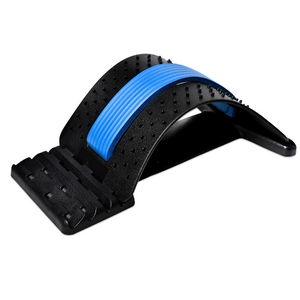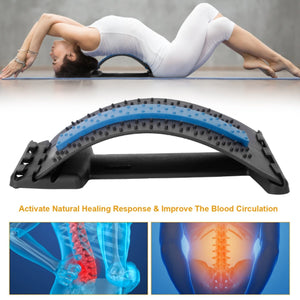Sacroiliac joint pain, also known as low back or butt pain, is annoying. It can make walking, climbing stairs, sitting, sleeping, or running hard. It's common, affecting about 30% of people with low back pain.
Let's find out how to manage it when you have to sit for a long time and what you can do to prevent it from bothering you too much.
What is SI Joint Pain?
Sacroiliac joint pain, or SI joint pain, is discomfort or pain in the area where the ilium (a portion of the pelvis) and sacrum (the triangle bone at the base of the spine) meet.
This joint is crucial for transferring weight and force between the upper and lower bodies when walking, running, or sitting. Pain in the thighs, hips, buttocks, or lower back may indicate mild to severe SI joint pain.
Many things, including pregnancy, arthritis, injuries, or bad posture, can cause it. If left untreated, it can impair quality of life and mobility.
Tips to Sit With SI Joint Pain and Find Relief
Here are some simple tips to help you sit comfortably and ease the discomfort of SI joint pain:
1- Employ Support
Having something to support your lower back when you're sitting is beneficial. To get it, take a seat with a pillow or towel rolled up behind your lower back.
This additional support eases the strain on your SI joint and naturally maintains your spine.
2- Sit Tall
Proper posture is more effortless when you sit up straight and rest your shoulders against the back of the chair.
Maintaining this position avoids undue strain on your SI joint and keeps your spine aligned.
3- Even Weight Distribution
When seated, your weight should be equally distributed over both hips. SI joint pain might be exacerbated by bending your pelvis or crossing your legs.
Keep both feet hip-width apart and level on the ground.
4- Take Breaks
Sitting for extended periods of time might strain your sacroiliac joint. Get up every hour, stretch, and take a walk to release this tension. It helps to avoid stiffness and relieves pressure on your SI joint.
5- Steer Clear of Slouching
Slouching increases strain on the back and pelvis and exacerbates SI joint pain. Select chairs that will help you sit up straight by providing sturdy support.
Refrain from spending a lot of time reclining on low or soft chairs.
6- Ice or Heat
You may reduce discomfort and inflammation by applying ice or heat to your SI joint and lower back. Heat can assist in relaxing muscles and increase blood flow, while ice can help numb the area and minimize swelling.
Apply cold or heat packs for ten to fifteen minutes daily as needed.
7- Gentle Pelvic Movements
While seated, you can gently move your pelvis to the front, back, or side. These minor motions can assist in reducing SI joint area stiffness and pain.
Put your feet flat on the floor and sit up straight. Gradually tilt your pelvis forward and bend your lower back a little.
You can also follow the sciatica trainer guide for pain relief
8- Choose a Chair that Keeps the Spine Neutral
Choosing a chair that accommodates your spine's natural curvature will improve your posture and lessen the strain on your SI joint. Follow these tips:
- To support the natural curve of your lower back, use a cushion or rolled-up towel, or select a chair with built-in lumbar support.
- Search for a chair that allows you to alter the backrest angle and height.
- Steer clear of chairs with sinking or excessively soft seat cushions, which can promote bad posture and slouching. Instead, choose a chair with a firm cushion to support your pelvis.
- Get a chair with movable armrests to comfortably position your arms while seated. Lessening the strain on your upper back and shoulders can help maintain a neutral spine position.
A Final Word!
You can get relief and control your SI joint pain when sitting by putting these recommendations and approaches into practice.
Mobility devices such as canes from MoovKart can assist in reducing pain and increase your general mobility if you need extra support. Visit MoovKart’s website to order yours.
People Also Ask!
Which 3 tests can tell you if SI causes your back pain?
Your doctor may perform the FABER, Patrick's, or Gaenslen's tests to determine if SI joint issues cause back pain.
Which is the best sleeping position for SI joint pain?
SI joint pain can be reduced by sleeping on your side with a pillow between your knees or on your back with a pillow beneath your knees.
Is swimming good for SI joint pain?
Swimming is generally good for SI joint pain as it is low-impact and helps strengthen muscles without putting too much stress on the joints.
Is walking good for sacroiliac joint pain?
Walking is usually beneficial for sacroiliac joint pain as it helps improve mobility, strengthen muscles, and promote overall joint health.






